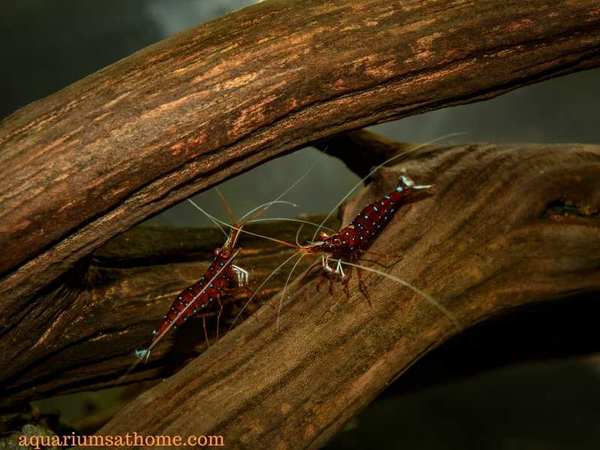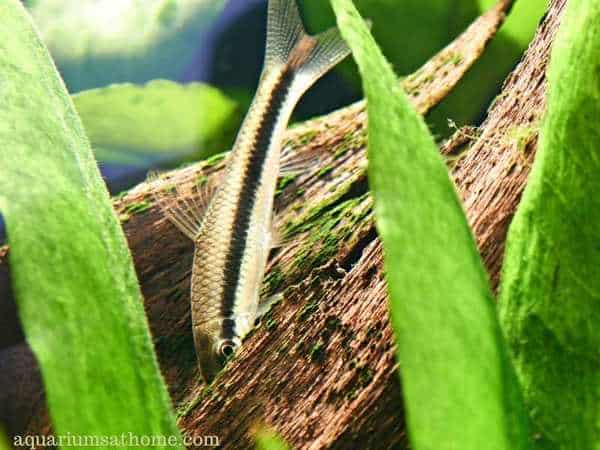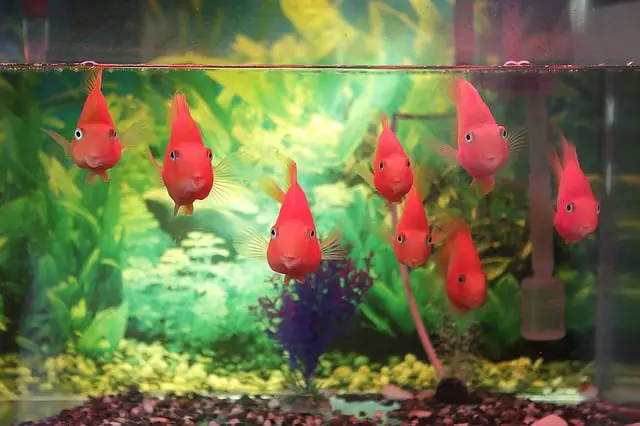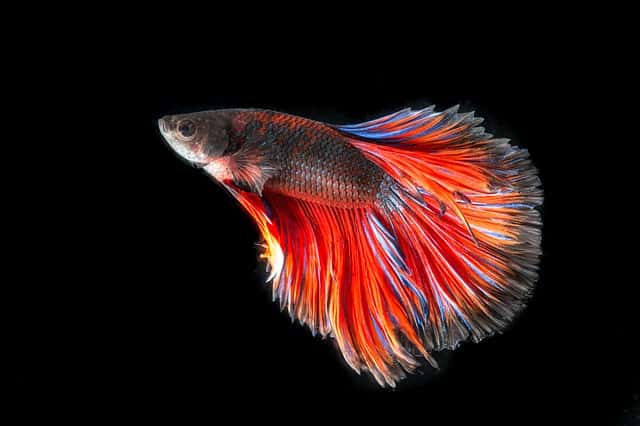As an aquarium hobbyist, you’ve likely seen driftwood in fish tanks. Apart from its esthetic uses, it provides many health benefits for fish and other aquatic creatures. Perhaps you’ve tried placing driftwood on the bottom of your aquarium only to have it float back up to the surface. This can be frustrating, indeed. So how do you get driftwood to sink in a fish tank?
To get driftwood to sink in a fish tank, you must hold it down until it’s saturated completely with water. Another alternative is to put something heavier on top of it like a rock or aquarium decoration so it can’t float back up to the top. A third option is to boil the wood in advance, let it cool down and then submerse it in the tank.
Now that you know the 3 main ways to get driftwood to stay at the bottom of your aquarium, let’s explore this topic further. Together we’ll learn how to anchor driftwood to rocks and plants, why driftwood is used in fish tanks, what health benefits it provides, how long it lasts, why you shouldn’t put it directly into your aquarium, and which species require it.
And now, if you’re ready learn more about driftwood and its uses in the aquarium industry, then let’s get started!
How Can I Make Driftwood Sink Faster?
To make driftwood sink faster in your aquarium, trying soaking in water first for a few days or boil it in a large pot on the stove or in a big drum over an open fire. If simply holding the driftwood down inside the aquarium doesn’t seem to keep it submersed, try placing a rock on top of it. You may need to leave it under the rock for up to 4 weeks to completely saturate it enough that is stays put along the bottom.
How Long Does It Tank for Driftwood to Sink?
Driftwood takes anywhere from 2 days to 2 weeks to sink to the bottom of an aquarium. This is for highly porous pieces that have been previously boiled and cured. It can take from 4 weeks to 2 months for it to stay sunk along the substrate. Once all the air that’s trapped in the wood has been replaced with water, it’ll stay immersed and won’t float.
Why is My Driftwood not Sinking?
Your driftwood may not be sinking because it’s not porous enough. As well, if it hasn’t been boiled in advance or allowed to sit submersed in water for a long enough time-period, it’ll eventually float up to the surface. If this is the case, try placing the driftwood back along the bottom of the tank and then put something heavier on top of it to keep it down.

Can You Put Driftwood Straight into a Fish Tank?
Though you may be tempted to take a piece of driftwood you’ve found on the beach and place it directly into your fish tank, don’t! In most cases, these pieces haven’t been dried or properly cured and can rot (due to bacterial fungus or mold) when put into your aquarium. There may even be harmful chemicals or parasites trapped in the wood that can leach out into the water and be toxic, even deadly to fish.
How Do You Anchor Driftwood in an Aquarium?
To anchor a piece of driftwood in an aquarium try attacking it to a piece of slate of stainless steel. You also use super glue and attach a rock or other weighted decoration to it – just be sure to use a product that’s aquarium-safe. There are many options to choose from that are often labelled as ‘reef glue’ or coral adhesive. You best bet is to inquire in-person at your local fish store or search online at Amazon.
How Do You Place Driftwood in a Fish Tank?
To place driftwood in a fish tank, decide in advance where you want to put each piece. Then, take the wood which has been cured in advance and place it along the bottom of the aquarium. Hold it there for a few minutes until its complete saturated. If upon removing your hand the piece lifts-up and floats to the top, take a rock or a heavier aquarium decoration and place it atop the wood inside the tank.
A good suggestion is to use plants such as java fern or java moss and anchor them to the wood with reef glue. Plants provide a natural, visually appealing aesthetic to your tank while also helping to keep the water clean and oxygenated. If an aquascape tank is your preference, then considering placing pieces of driftwood among greenery on different levels in a built-up fashion.
How Long Will Driftwood Last in an Aquarium?
Since driftwood is an organic substance, it’ll break down naturally in water over time. How long it takes to disintegrate depends upon many factors. However, on average, it usually takes anywhere from 2 to 5 years for this process to take place. To ensure the longevity of the wood, make sure it’s aquarium-safe and properly cured otherwise, it may rot when placed in the tank.
Why is Driftwood Used in an Aquarium?
Driftwood helps to naturally boost aquarium fish immunity to disease. When submerged in the tank, driftwood releases tannins which leach slowly into the water and create a slightly acidic aquatic environment. This increase in acidity helps reduce illness-causing bacteria and keeps the water safe. Driftwood is also used by fish as place for cover and laying eggs as well as a source of food.
Should I Put Driftwood in My Fish Tank?
You should put driftwood in your tank if you want to create a natural-looking aquarium that’s reminiscent of a riverbank or low lake ecosystem. Like substrate and filter media, driftwood helps promote the growth of beneficial bacteria in a contained aquatic setting. However, not just any old piece of wood will do. Driftwood must be properly cured first to be considered aquarium safe.
Does Floating Driftwood Stress Out Fish?
Depending on the type of fish you have, small pieces of floating driftwood shouldn’t bother them. In fact, some fish prefer to congregate around floating objects in an aquarium in the hopes of finding additional sources of food. Fish in a heavily planted or brackish tank will often use floating objects as landmarks to orient themselves.

Conclusion
In summation, holding driftwood down with your hand for as long as possible (until it’s completely saturated) will help it to stay sunk along the bottom of a fish tank. If this doesn’t work, you can try anchoring it to a rock, plant or other aquarium decoration using reef glue as a safe adhesive. Yet another option is to cure the wood in advance by boiling it to make it more porous.
I trust this article has been of help to you and answered all your questions regarding driftwood and how to use it in a fish tank. Thanks for reading and good luck with your aquarium hobby.
Related Posts
What Types of Wood are Safe for Aquariums?
How Much Do Indian Almond Leaves Lower pH?
Aquarium Turtles that Stay Small






